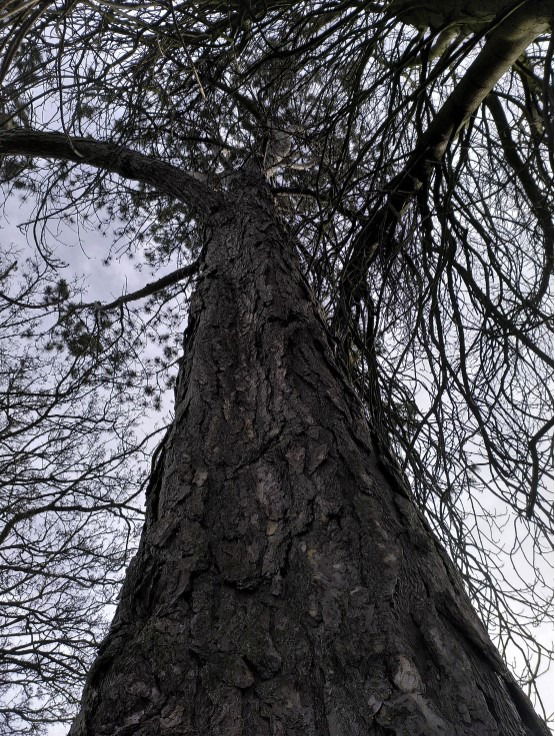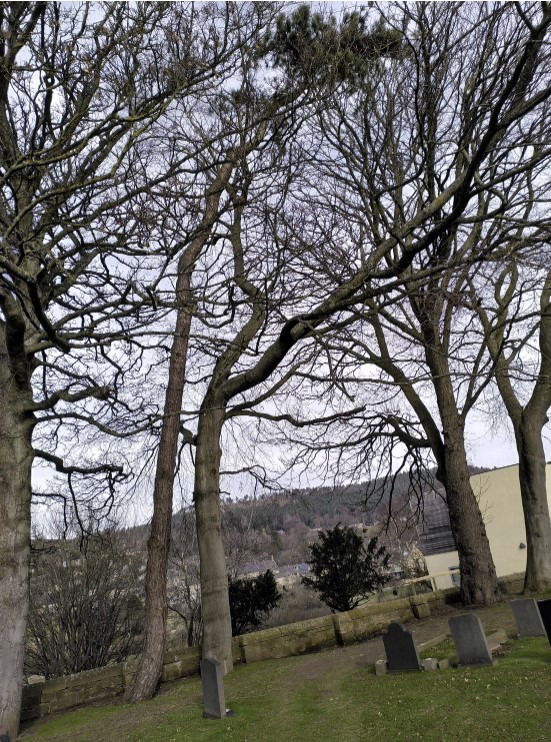The mighty Scots Pine. A native conifer.
Saturday, 29 April 2023
Although it is the native pine tree of Scotland, it is seen across many other parts of the UK, including here in Rothbury. It is a wild tree in its native land but is planted by humans elsewhere. The Scots Pine is the most widely dispersed conifer in the world.
Pinus sylvestris
Imagine how magnificent the landscape of Scotland once was, with thousands of these incredible trees forming huge forests across the land, in the Caledonian Forest. By the 17th century, because of being felled for fuel, and for timber, these woodlands declined. Now only about 1% of the estimated original forests survive.
What actually is a 'conifer'?
"Conifers are a very old group of trees that includes firs, cedars, cypresses, junipers, kauri, larches, pines, hemlocks, redwoods, spruces and yews. As a rule, conifers bear cones, though some don't look much like cones as we think of them. The other key feature they share is they have very small leaves in the form of needles or scales.
With the exception of some Scots Pine in Scotland and a few Yew woodlands, you will not come across a natural forest of conifer trees in the UK and Ireland. They are most likely planted non-native species, usually for timber production or as shelter-belt woodland". Which Conifer Trees Are Native to Britain? - Woodland Classroom
We have three native conifers - and the Scots Pine is one of them. (The other two are Juniper and Yew). The Scots Pine is the ideal home for Scottish wildlife, such as capercaillie, wildcat, and red squirrel. But of course, much smaller types of ecosystems are also linked with this species. The Scots Pine has strong connections with a great many birds, insects, and plants - including lichens and mosses. And underneath the ground, of course, the mycorrhizal relationships are immense.
How to identify a Scots Pine
"Doug Gilbert from Trees for Life shows how to identify the iconic Scots pine. As the largest and longest-lived tree in the Caledonian Forest, the Scots pine is a keystone species, forming the backbone on which many other species depend. Doug gives some tips on how to differentiate Scots pine from the non-native Lodge pole pine, which includes looking for a tiny Scottish beard..." https://youtu.be/46BcsA9JX2I


Picture Credit: The Telegraph Pole Appreciation Society
The resin of the Scots Pine can be used to make turpentine.
Climate Change and the very real threat to the Scots Pine
See t his from an academic, paper on the future of this magnificent tree: "Scots pine (Pinus sylvestris L.) is the most widely distributed pine species, yet its occurrence is seriously threatened by climate change, especially in the isolated and relic populations at the southern fringes of its range".
Did you know?
1. The needles (leaves) always grow in pairs, and are slightly twisted.
2. Both the male and female flowers grow on the same tree. The male flowers are yellow, these grow at the base of shoots, and the female flowers are red, purple and globe-shaped. They grow at the tips of new shoots.
3. The fruit is pollinated via the wind. The female flowers then turn green and transform into cones. On every tree, are cones of different ages. You can tell a mature cone, as it will be a brownish-grey colour and each scale will have a bump in the middle.
4. Older trees have shorter needles than younger trees.
5. The Scots Pine was voted the national tree of Scotland in 2014.



